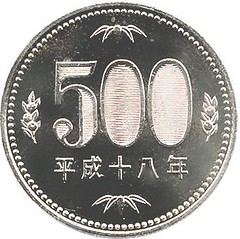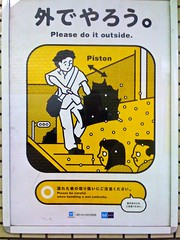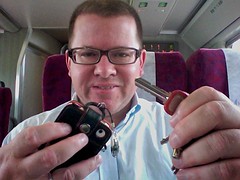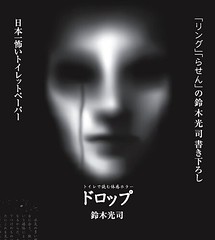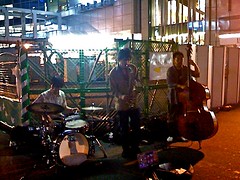At least that is what they tell me! I like Japan and have had some interesting, enjoyable and indeed unique experiences here, otherwise I would not have stayed in this country since 1987. But over the years, I've had an earful of people telling me directly or indirectly how unique Japan and its people are, and I've had to burst more than one person's bubble. Sometimes incorrectly.
A couple examples of the oft-heard "unique" characteristics of Japan and its people, from my first-hand experience:
- Only Japan has four seasons. So my teachers lied to me about the nature of Spring, Summer, Winter and Fall? I'm shocked!
- Japanese intestines are unique, so that is why Japanese cannot digest foreign rice and cannot import US beef. Quick, revise the anatomy textbooks.
- Foreigners cannot understand the unique Japanese concepts of dignity and morality. Just ask Konishiki who was practically put on trial for not being dignified enough to perform his sumo-ly duties at the highest level, but while you do that, ignore the Japanese abusive Sumo stablemasters.
- Japanese pregnancies take 10 months (!). It's possible that all that extra moral development occurs in utero, but I kind of bet it's got something to do with lunar months or the ancient Japanese counting 0 as 1.
- Japanese Kafunsho (hayfever) does not exist in other countries. Put away that Allegra, you buncha fakers.
- The snow in Japan is special, and unique, and that's why we cannot import foreign ski equipment because it just doesn't work here. Ah huh. A patent on crystallized water?
Of those, I dismissed the Japanese intestines-are-unique thing as being more politician wind-blow, but there is anecdotal evidence I've read in favor of it being true. I have to admit that that's physiologically possible for races (i.e. caucasian vs mongoloid) to be physically different, but the problem arises when eager-beaver politicians try to further some agenda by linking a longer Japanese intestine to Japanese "not being able to digest" certain foods. Same goes for thinking that "Japanese snow is unique", and therefore foreign skis won't work on it. Rubbish.
What I believe is unique are the aspects of the Japanese language that allow a detailed and evocative rendering of the weather, or seasons, a la Basho or a writer like Kawabata. By the same token there are things that Japanese language does not handle well, like anatomical descriptions. That's part of the reason the doctors use German and English and not Japanese, to describe ailments. So it's not necessarily that the Japanese language is "better", but that there are some well-developed aspects and some not-so-well developed aspects.
Rather than have a strange fixation on these comfortable yet largely inaccurate trivialities steeped in the language and (ill)logic of nihonjinron thinking, I would hope that the Japanese would focus on some of the genuinely amazing and far-reaching achievements of their countrymen, like Takamine's isolation of Adrenalin, the various management techniques of Toyota, or their wonderful cultural treasures (and I don't mean manga and maid cafes). I would hope that the government would teach the Japanese children, my children included, the true beauty of Japan, rather than resorting to weak arguments.
I'll leave you with something I saw today that triggered this aside, and thinking about my time here. Eric Hilton wrote in to the the Japan Times that he supplied a student with the (in my opinion very adroit) translation of a popular Japanese proverb "saru mo ki kara ochiru" (even monkeys fall from trees) as "even Homer nods", and he said that the student was amazed that proverbs even exist in English. Now that takes the cake, but at least one can say that the child is just an ignorant student.
That's more than we can say for the people who put such ideas into his head.
